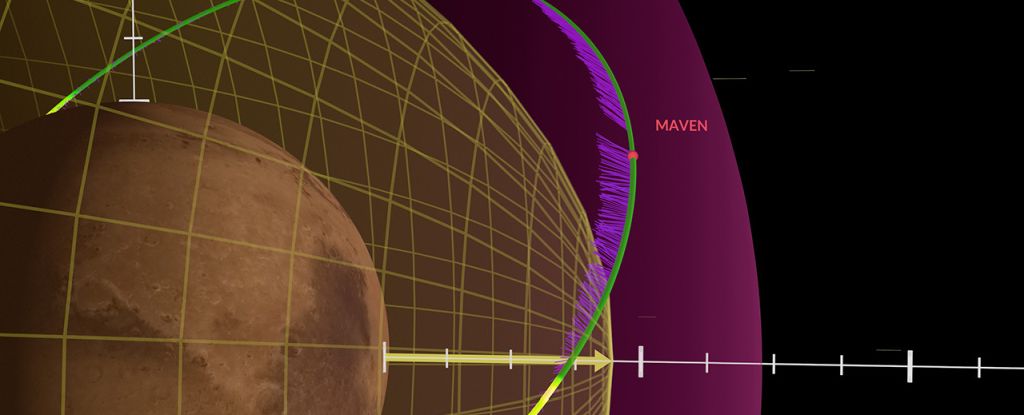A pause in the solar wind blew out the Martian atmosphere
- December 14, 2023
- 0
On December 26, 2022, NASA’s MAVEN probe orbiting Mars recorded a rare phenomenon: a type of dip in the solar wind. This window caused an explosive expansion of
On December 26, 2022, NASA’s MAVEN probe orbiting Mars recorded a rare phenomenon: a type of dip in the solar wind. This window caused an explosive expansion of

On December 26, 2022, NASA’s MAVEN probe orbiting Mars recorded a rare phenomenon: a type of dip in the solar wind. This window caused an explosive expansion of the Martian atmosphere. Space weather created another surprise; Studying this will allow us to learn more about potentially habitable worlds around distant stars.
The intensity of the solar wind (electrons and hydrogen ions flying from the surface of the star) depends on its effectiveness and the specific state of local magnetic fields. Sometimes a star emits particles of greater strength and speed that capture the strings of slower particles released earlier. Regions then appear in our system where the concentration of solar wind particles increases and decreases, affecting the atmospheres of the planets.
Such an effect was first observed in 1999, when a sudden weakening of the solar wind inflated Earth’s atmosphere and magnetosphere by a factor of 100. At the same time, it should be noted that the Earth has a magnetic field that protects us from cosmic particles, while Mars does not. Mars also has an induced magnetic field. It arises in the process of interaction of the solar wind with the ionosphere of Mars. This field and particles of the solar wind can be captured by the equipment of NASA’s MAVEN orbital probe.
During the observation of electromagnetic events around Mars on December 26, 2022, a 10-fold decrease in the pressure of the solar wind and a 100-fold decrease in the density of its particles was recorded. Analysis of the data showed that during this time the ionosphere and the induced magnetic field of the Red Planet expanded threefold. Mars’ atmosphere appears to have been blown away from the inside. Clearly, if Mars were in a system with a less “windy” star, its evolution would follow a different path.
The Mars experience shows how important it is to make in situ measurements. We will not be able to learn about such processes without orbiting devices on near and distant planets. Studying these processes in our system will provide information for modeling atmospheric phenomena on planets in other star systems and, in general, will allow better modeling of processes related to the origin of life on other worlds.
Source: Port Altele
As an experienced journalist and author, Mary has been reporting on the latest news and trends for over 5 years. With a passion for uncovering the stories behind the headlines, Mary has earned a reputation as a trusted voice in the world of journalism. Her writing style is insightful, engaging and thought-provoking, as she takes a deep dive into the most pressing issues of our time.